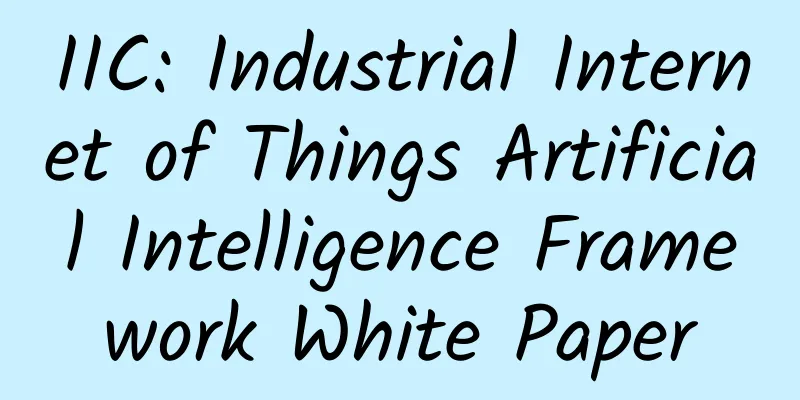IIC: Industrial Internet of Things Artificial Intelligence Framework White Paper

|
Industrial AI (AI), the application of artificial intelligence to industrial applications, is a major contributor to value creation in the Fourth Industrial Revolution. AI is being embedded in a wide range of applications, helping organizations realize significant benefits and enabling them to transform the way they deliver value to the market. This document provides guidance and assistance for the development, training, documentation, communication, integration, deployment, and operation of AI-based Industrial IoT systems. It targets decision makers from IT and operational technology (OT), business and technical personnel from multiple disciplines, including business decision makers, product managers, system engineers, use case designers, system architects, component architects, developers, integrators, and system operators. The document is built around the architectural viewpoints in the IIC's Industrial Internet Reference Architecture, namely the business, usage, functional, and implementation viewpoints. The document discusses the business, commercial, and value creation considerations that drive the adoption of AI. It also elaborates on the concerns raised by the use of AI, use cases in industry, and the ethical, privacy, bias, security, labor impacts, and social issues associated with it. On the technical side, the document describes the architectural, functional, and data considerations related to AI, and discusses various implementation considerations such as performance, reliability, data attributes, and security. The application of AI is expected to accelerate in the industry. Given the rapidly growing computing power, the wider range of data available for training, and the increasingly complex algorithms, AI technology will continue to evolve. Current IT standards and best practices must continue to evolve to address the unique characteristics of AI itself, as well as specific considerations related to the security, reliability, and resilience of industrial IoT systems. Additionally, organizations’ growing maturity with AI will help them realize that its benefits far outweigh its drawbacks. The AI standards ecosystem will also continue to evolve, such as the ongoing standards work in ISO/IEC JTC 1/SC42, which provides guidance to JTC 1, IEC, and ISO committees developing AI standards. Based on these trends, there is no doubt that AI will continue to push the state-of-the-art and capabilities possible, and therefore, what is considered reasonable will also continue to evolve. Attitudes toward the technology and corporate expectations of its use will also continue to evolve. In the future, we can expect the use of AI technology to become the norm rather than the exception, and given the societal benefits of this technology, “not using AI” may eventually become irresponsible. The PDF version will be shared on 199IT Knowledge Planet, just scan the QR code below! |
<<: World Economic Forum: Global Energy Transformation Index Report 2022
>>: Will the wealthy and willful Double Eleven shopping gala become the new normal for e-commerce?
Recommend
Channel pitfalls: 8 hidden rules of App operation
First, let’s deconstruct the position of App Oper...
Microsoft's embarrassment: Mobile phone manufacturers have no chance to make money by following WP system
Joe Kelly, head of international media affairs at...
International Bird Day | How long have you not heard birds singing? Take this bird guide
When spring comes and flowers bloom, birds fly th...
You have fat to thank for your weight loss!
One minute with the doctor, the postures are cons...
iOS 9 is officially released. Have you discovered the hidden features?
[[149579]] Apple has officially released iOS 9 to...
Focus | Which groups of people are more likely to be infected again? Will they be infected multiple times due to different virus strains?
Will you be infected again after being infected w...
How to meet user needs before an event? There are 4 ideas
This has always been a question that everyone wan...
The secret to increasing user conversion rates for high-priced products!
What should we do if our product prices are much ...
As video regulation tightens, operators urgently need to change their tactics
Before the Internet Security Day on April 29, the...
Understand in 30 seconds: What happened between Russia and Ukraine?
Mixed Knowledge Specially designed to cure confus...
Yuanqi Forest’s brand private domain layout
On February 5, a friend sent me a poster of a fre...
Analyze how to place information flow ads in the automotive industry from 3 perspectives
"Golden September and Silver October" i...
How to use short videos to direct traffic to the live broadcast room!
This is a relatively hardcore article. In additio...
When fake ratings become the new normal, how do we evaluate the commercial value of film and television dramas?
On December 4 last year, "Beauty's Priva...
Analysis of the user system of Momo live broadcast product
There is a mind map at the end of the article. By...









